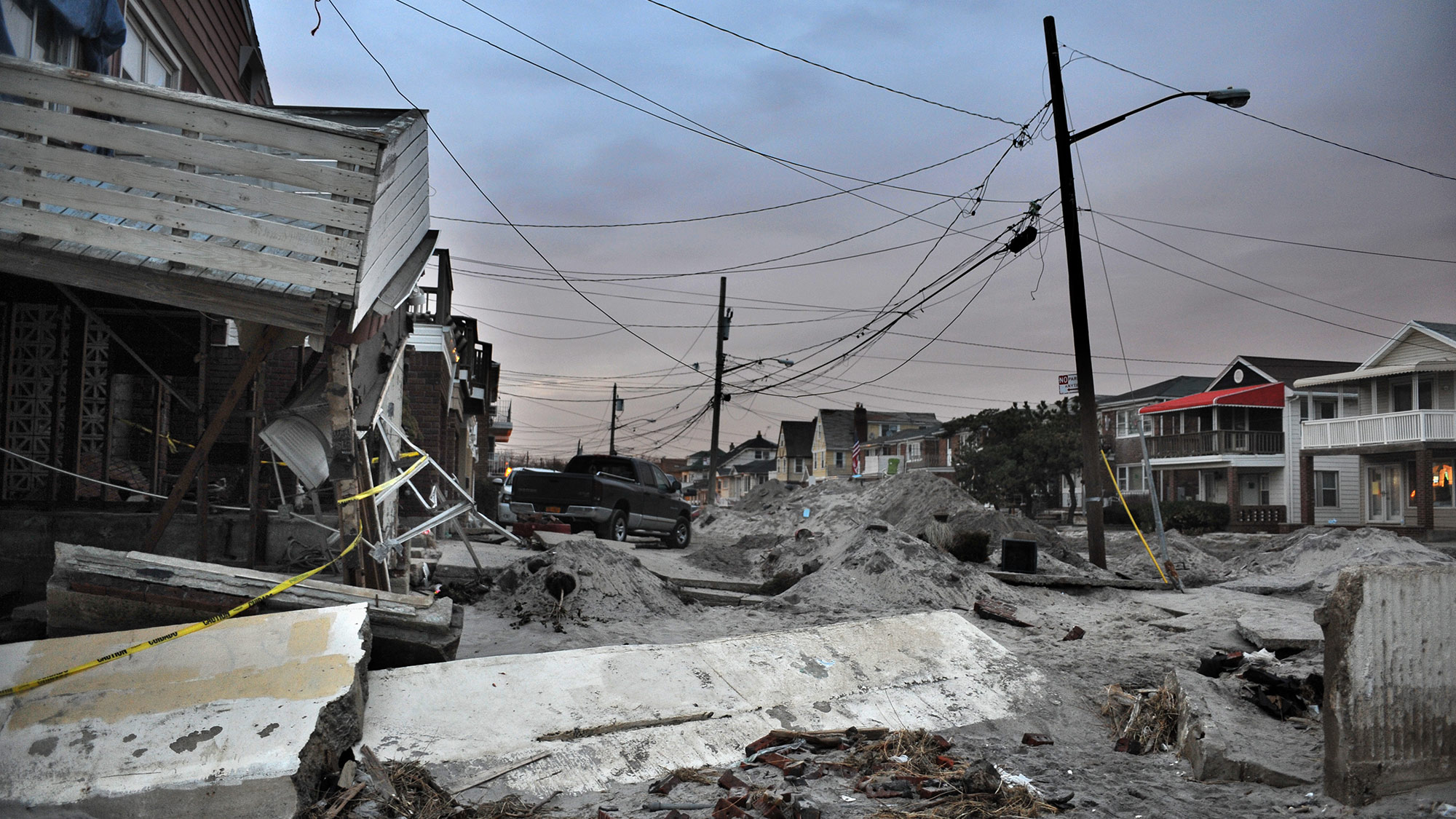As we reported Monday, the Senate has voted to delay rate-hikes for residents of flood-prone areas who currently enjoy cheap, government-issued flood insurance. Here’s the reaction from one of those residents via Twitter:
Senate passed #fixflood bill! Now onto the house

— Olivia Sellke (@oh_sellke) January 30, 2014
But budget hawks, along with insurance industry reps and environmentalists, were doing a different dance. The Washington Post’s editorial board had this to say:
It takes some chutzpah for [flood insurance] beneficiaries to act entitled to subsidies from the vast majority of taxpayers who chose not to live on the beach — or who never could afford it in the first place.
And here’s the kind of mood that this whole fracas has put lawmakers in:
[protected-iframe id=”bd995f71f1cef8c0359b314e79bf50df-5104299-30922307″ info=”http://c.brightcove.com/services/viewer/federated_f9?isVid=1″ width=”486″ height=”412″]
(Rep. Michael Grimm [R-N.Y.] later explained that he threatened to toss the reporter over the balcony and “break” him “in half — like a boy” because he was rattled from a day of debating flood insurance reforms.)
In case you’re just joining us, here’s why all this matters: The law that led to the rate hikes in the first place — it’s called the Biggert-Waters Flood Insurance Reform Act, and it passed in 2012 — sent a clear message to Americans living along our increasingly storm-ravaged coasts: We, as a country, cannot afford to rebuild your communities every time a hurricane wipes them out. If you choose to live in a place that is vulnerable to storm surges or floods, you will have to take that risk upon yourselves.
 Harsh? Yes, but consider that the National Flood Insurance Program is already $24 billion in debt, thanks to its cut-rate premiums and a string of hurricanes that have trashed coastal cities in the past decade. It will likely be $30 billion in the hole by the time all the bills are paid for the cleanup following Superstorm Sandy. If ratepayers don’t start pouring money back into the federal treasury — and it is highly unlikely that they will, the way the insurance program is currently structured — you and I will be stuck with the bill.
Harsh? Yes, but consider that the National Flood Insurance Program is already $24 billion in debt, thanks to its cut-rate premiums and a string of hurricanes that have trashed coastal cities in the past decade. It will likely be $30 billion in the hole by the time all the bills are paid for the cleanup following Superstorm Sandy. If ratepayers don’t start pouring money back into the federal treasury — and it is highly unlikely that they will, the way the insurance program is currently structured — you and I will be stuck with the bill.
If that isn’t enough to make you a little worried, try this: A report commissioned by FEMA last year estimated that, thanks to sea-level rise and ongoing development along the coasts, the number of coastal properties requiring coverage under the National Flood Insurance Program could more than double by 2100. The program is already on the hook for $1.5 trillion in vulnerable homes and businesses.
Clearly, it’s time for coastal residents to start paying their way. That’s going to take a bite out of many people’s bank accounts, but as I’ve written previously, Biggert-Waters includes some provisions designed to soften the blow. In fact, only 5 percent of policyholders will see immediate rate hikes, according to this handy FEMA fact sheet.
Who are these people? Are they a bunch of Richie Riches with million-dollar beach homes, as the Washington Post suggests? Or is it ordinary folks, as an increasingly vocal and organized group of opponents would have us believe?
A 2007 study by the Congressional Budget Office found that a quarter of subsidized coastal properties were vacation homes. Forty percent of them were worth more than $500,000, while 12 percent were worth more than $1 million. An analysis by the Government Accountability Office found that National Flood Insurance Program policies are overwhelmingly concentrated in wealthy areas. Counties in the bottom two deciles for median household income and home values had just 0.4 percent of the subsidized policies.
Those numbers point more toward Richie Rich than Joe the Plumber, I’d say. And there are a number of solid proposals for ensuring that people of low or fixed income can afford their new rates.
But there’s another concern about the Biggert-Waters law: In addition to phasing out insurance subsidies, it directed FEMA to update its flood insurance maps to reflect current understanding of flood risk. The agency has been dutifully redrawing its maps, putting thousands of homeowners who thought (perhaps delusionally) they were high and dry into designated floodplains, and moving others into higher-risk zones.
FEMA has a process by which homeowners and communities can protest redrawn flood maps, but the changes, which will raise some homeowners’ rates and require many others to buy flood insurance for the first time, have sparked even more outrage and consternation. And to be fair, some of those maps are flawed, navigating flood insurance requirements can take years off of your life, and the costs can be staggering.
But consider the alternative: A world where FEMA fails to accurately map flood-prone areas, leaving residents uninformed of the risk, and shit out of luck when a storm hits them unawares and uninsured. That’s what happened to some residents of New York when Sandy hit. ProPublica and WNYC Radio reported in December that residents paid tens of thousands of dollars out-of-pocket to make repairs that were not covered by flood insurance because their homes were not included in high-risk areas on the maps. (That was on top of hefty disaster relief checks from the government.) FEMA managers and state officials knew the maps were inadequate, but lacked the funding to update them.
The New Orleans-based Coalition for Sustainable Flood Insurance, which is pushing the rollbacks of the Biggert-Waters reforms, claims that if the law is implemented, “hundreds of thousands, and perhaps millions, of Americans who have played by the rules, built where the government told them, maintained insurance, and never flooded — will lose everything.”
That’ remains to be seen. But here’s what the science tells us: Hundreds of thousands will lose everything in the coming decades as a result of building in places that have always been vulnerable, and are only becoming more so as the climate warms. That is, unless we can find ways to hold back the rising tides and the worsening storms, or move people out of harm’s way.
For my next trick, a look at proposals to retreat from the coasts, and how we might do that in a sane, humane way …


